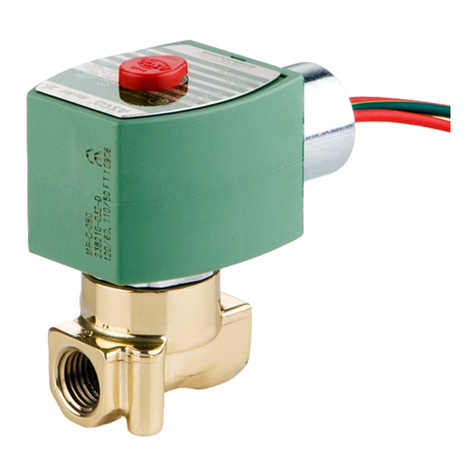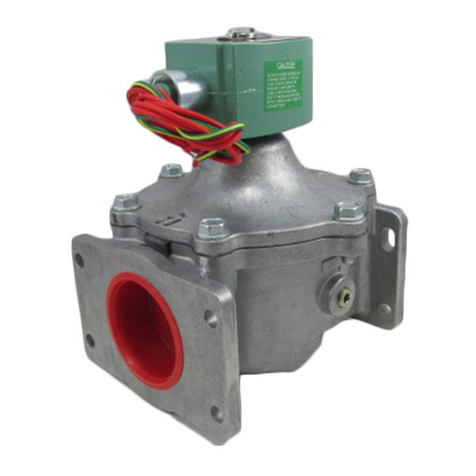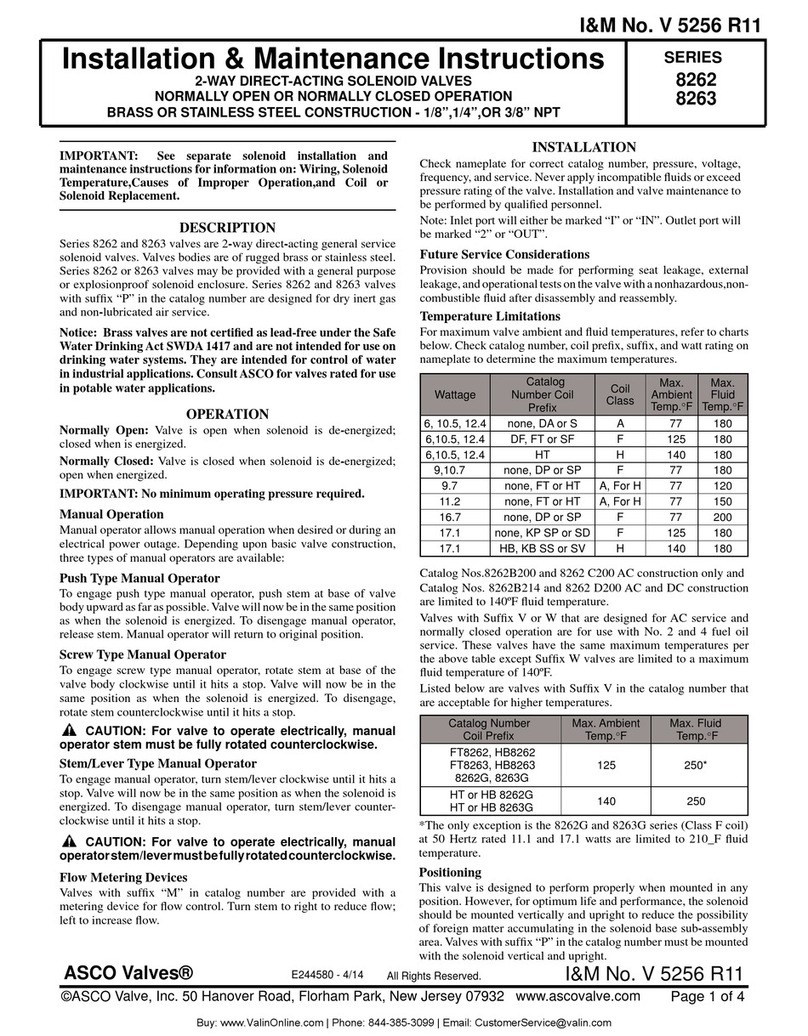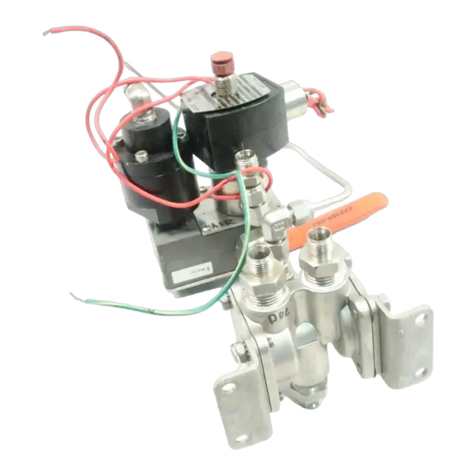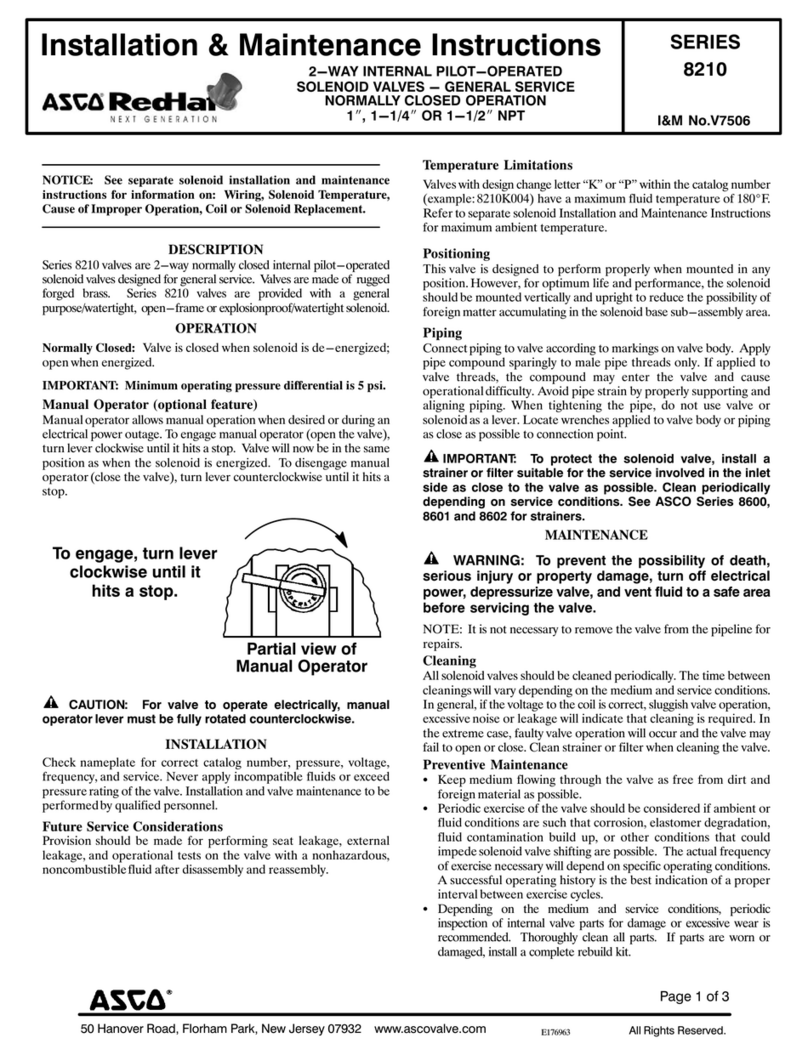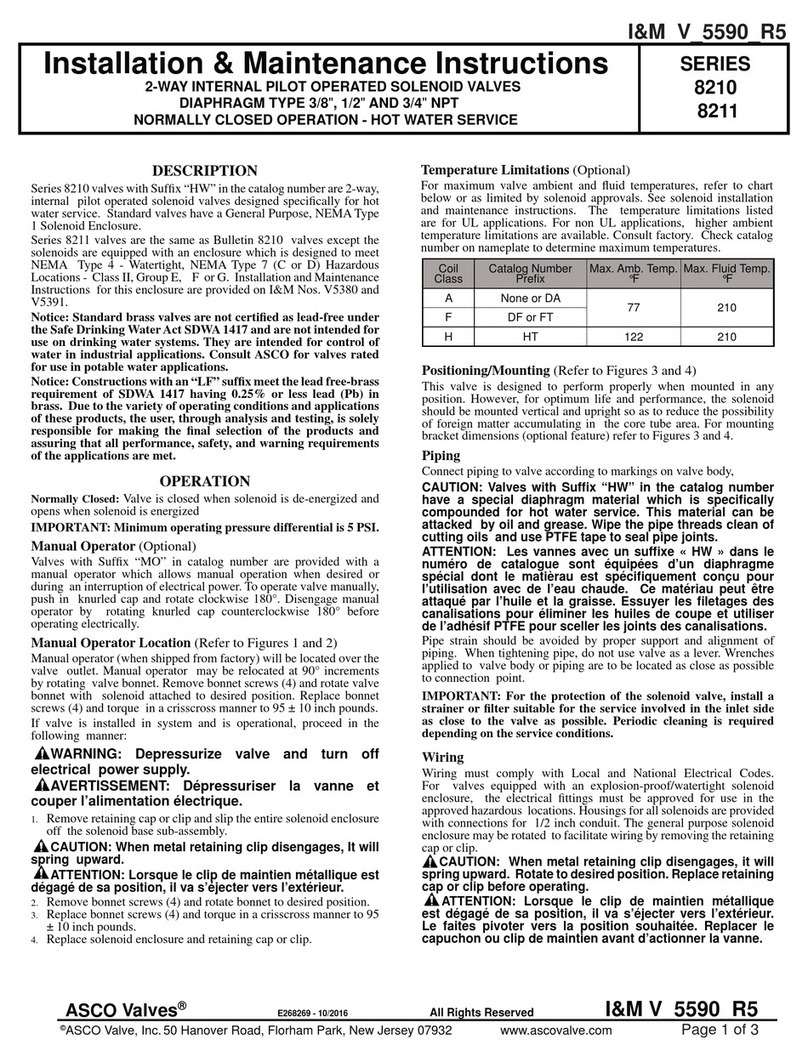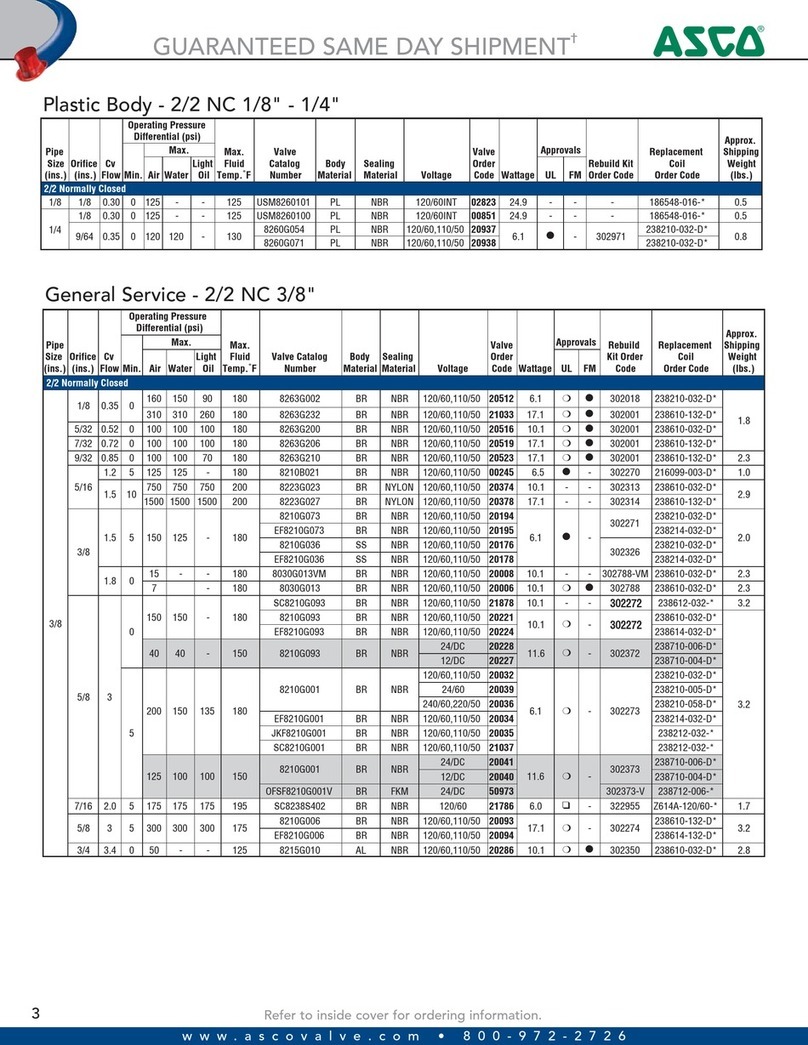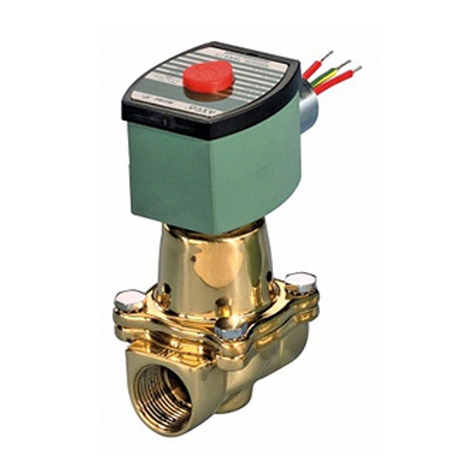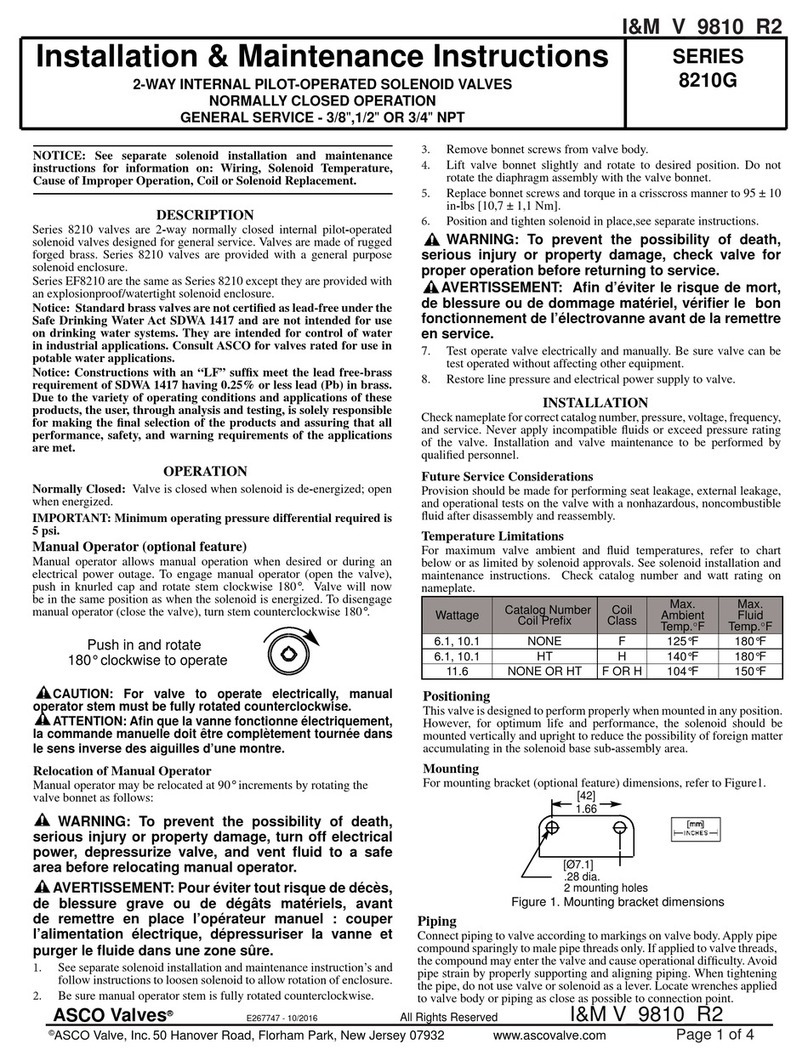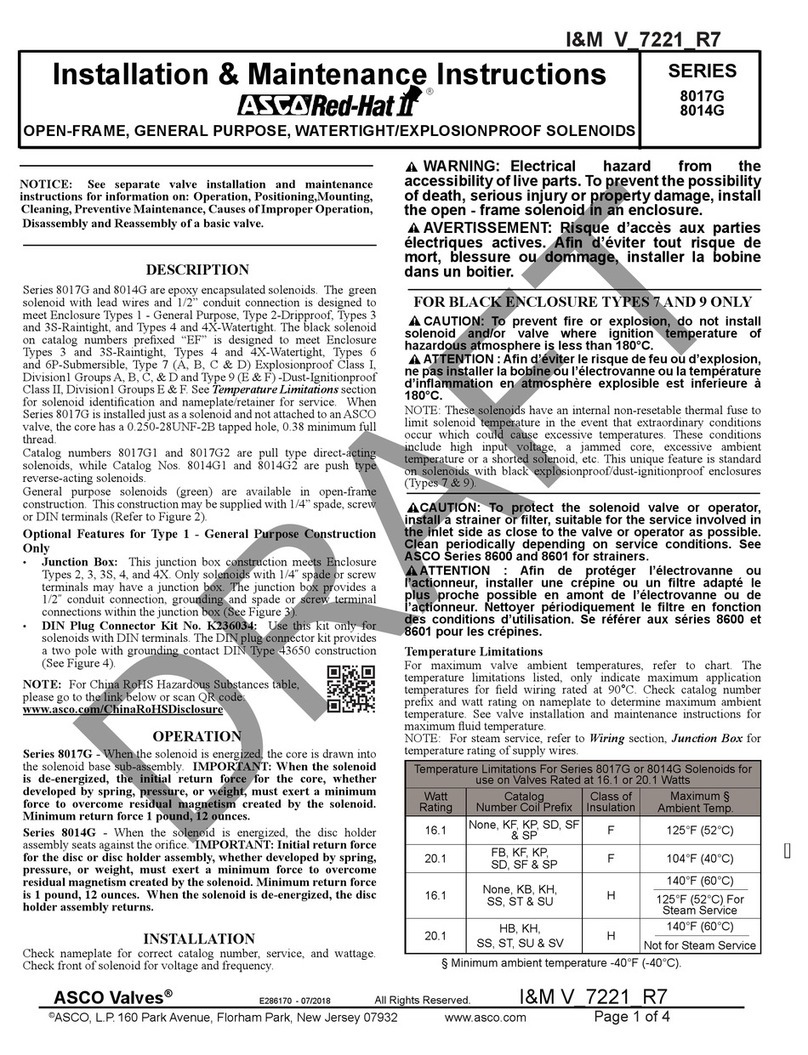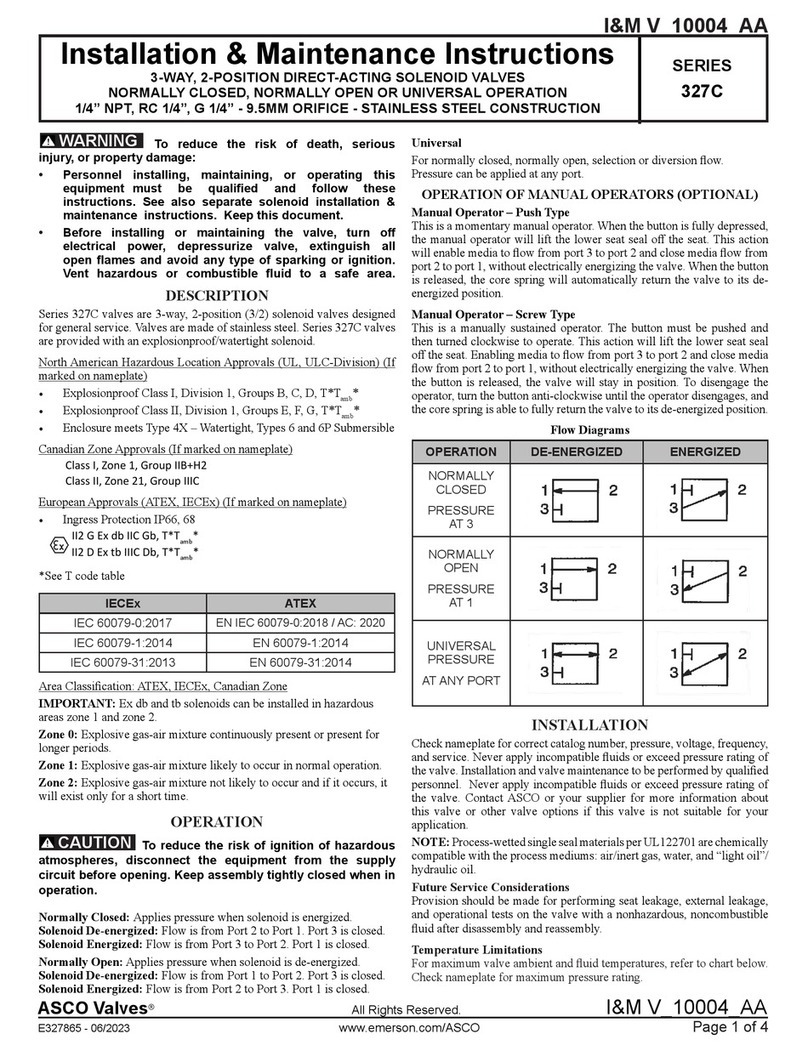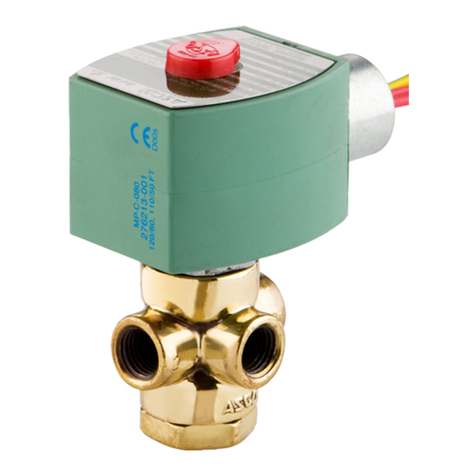
ASCO Valves® E252556 - 29 April 2015 6:13 PM All Rights Reserved. I&M V_5455_R8
©ASCO Valve, Inc.50 Hanover Road, Florham Park, New Jersey 07932 www.ascovalve.com Page 1 of 4
I&M V_5455_R8
Installation & Maintenance Instructions
2-WAY INTERNAL PILOTED-OPERATED SOLENOID VALVES
BRASS AND STAINLESS STEEL CONSTRUCTION
NORMALLY CLOSED OPERATION — 1”,1 1/4” & 1 1/2” NPT
Positioning
AC Construction (Alternating Current):Valve is designed to perform
properly when mounted in any position. However, for optimum life and
performance, the solenoid should be mounted vertical and upright so as
to reduce the possibility of foreign matter accumulating in the solenoid
base sub-assembly area.
DC Construction (Direct Current): Valve must be mounted with
solenoid vertical and upright.
Piping
Connect piping to valve according to markings on valve body. Apply
pipe compound sparingly to male pipe threads only. If applied to valve
threads, the compound may enter the valve and cause operational
difficulty. Avoid pipe strain by properly supporting and aligning piping.
When tightening the pipe, do not use valve or solenoid as a lever.
Locate wrenches applied to valve body or piping as close as possible to
connection point.
CAUTION: To protect the solenoid valve, install a strainer
or filter suitable for the service involved in the inlet side as
close to the valve as possible. Clean periodically depending
on service conditions. See ASCO Series 8600 and 8601 for
strainers.
MAINTENANCE
WARNING: To prevent the possibility of death,
serious injury or property damage, turn off electrical
power, depressurize valve, and vent fluid to a safe
area before servicing the valve.
NOTE: It is not necessary to remove the valve from the pipeline
for repairs.
Cleaning
All solenoid valves should be cleaned periodically. The time between
cleanings will vary depending on the medium and service conditions.
In general, if the voltage to the coil is correct, sluggish valve operation,
excessive noise or leakage will indicate that cleaning is required. In the
extreme case, faulty valve operation will occur and the valve may fail to
open or close. Clean strainer or filter when cleaning the valve.
Preventive Maintenance
• Keep the medium flowing through the valve as free from dirt and
foreign material as possible.
• While in service, the valve should be operated at least once a
month to insure proper opening and closing.
• Depending on the medium and service conditions, periodic
inspection of internal valve parts for damage or excessive wear
is recommended. Thoroughly clean all parts. If parts are worn or
damaged, install a complete ASCO Rebuild Kit.
Causes of Improper Operation
• Incorrect Pressure: Check valve pressure. Pressure to valve
must be within range specified on nameplate.
• Excessive Leakage: Disassemble valve and clean all parts. If
parts are worn or damaged, install a complete ASCO Rebuild Kit.
SERIES
8210
8211
NOTICE: See separate solenoid installation and maintenance
instructions for information on: Wiring, Solenoid Temperature,
Cause of Improper Operation, Coil or Solenoid Replacement.
DESCRIPTION
Series 8210 valves are 2-way normally closed internal pilot-operated
solenoid valves designed for general service. Valves are made of rugged
forged brass or stainless steel. Series 8210 valves are provided with a
general purpose solenoid enclosure.
Series EF8210 and 8211 are the same as Series 8210 except they are
provided with an explosionproof or explosionproof/watertight solenoid
enclosure.
NOTICE: Brass valves are not certified as lead-free under the Safe
Water Drinking Act SWDA 1417 and are not intended for use on
drinking water systems. They are intended for control of water in
industrial applications. Consult ASCO for valves rated for use in
potable water applications.
OPERATION
Normally Closed: Valve is closed when solenoid is de-energized; open
when energized.
NOTE: No minimum operating pressure differential required.
Manual Operator (optional feature)
Manual operator allows manual operation when desired or during an
electrical power outage. To engage manual operator (open the valve),
remove operator cap and gasket base of valve. Turn manual operator stem
clockwise as far as possible. Do not force operator stem. Valve will then
be in the same position as when the solenoid is energized. To disengage
manual operator, turn stem counterclockwise as far as possible.
CAUTION: Stem must be fully retracted counterclockwise
before operating valve electrically.
Replace manual operator cap gasket and cap.
INSTALLATION
Checknameplatefor correctcatalog number,pressure, voltage,frequency,
and service. Never apply incompatible fluids or exceed pressure rating
of the valve. Installation and valve maintenance to be performed by
qualified personnel.
Future Service Considerations
Provision should be made for performing seat leakage, external leakage,
and operational tests on the valve with a nonhazardous, noncombustible
fluid after disassembly and reassembly.
Temperature Limitations
For maximum valve ambient and fluid temperatures, refer to chart below.
Check catalog number prefix and watt rating on nameplate.
Watt
Rating
AC/DC
Catalog
Number
Prefix Coil
Class Max. Ambient
Temp. Max. Fluid
Temp.
15.1 & 16.1
AC
None, KF,
SF or SC F 125 °F (51.7 °C) 180 °F (82 °C)
HT, KH,
ST or SU H 140 °F (60 °C) 180 °F (82 °C)
30.6
DC HT H 104 °F (40 °C) 77 °F (25 °C)
30.8
DC None F 104 °F
(40 °C) 180 °F
(82 °C)
HB H
